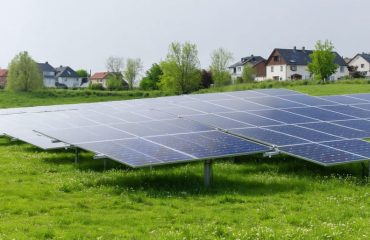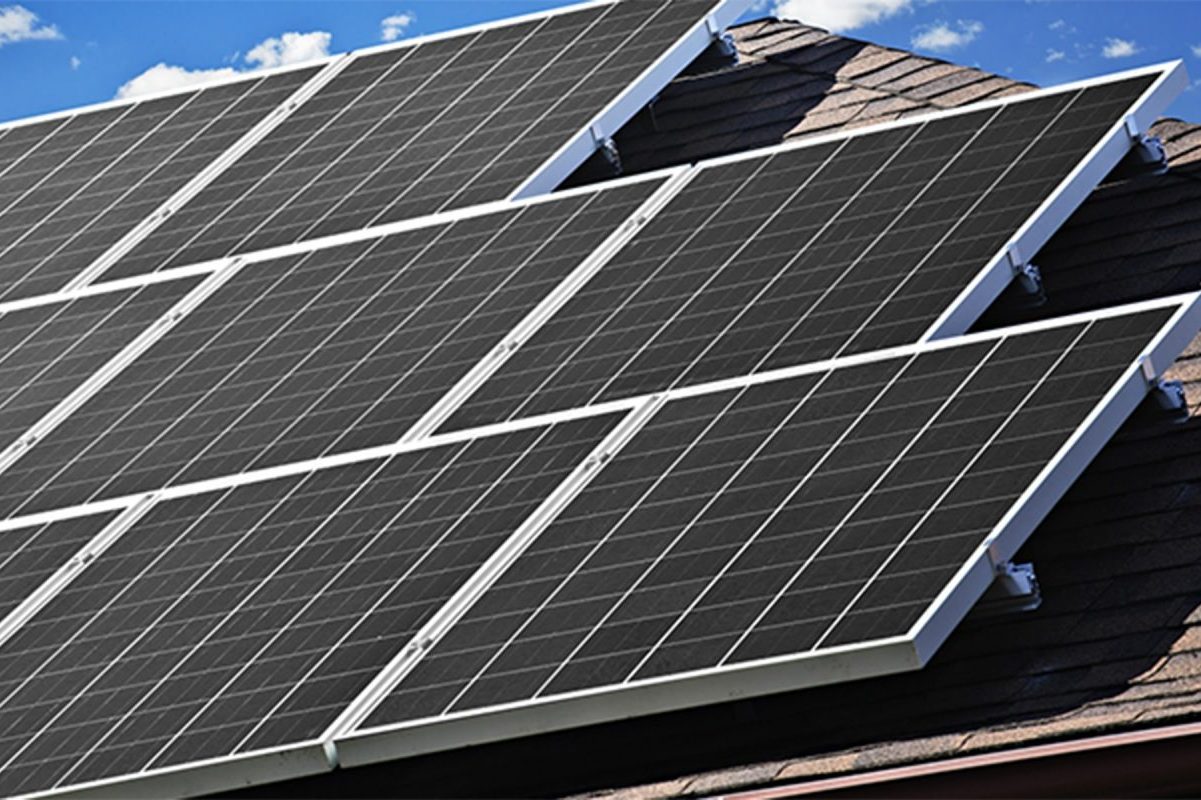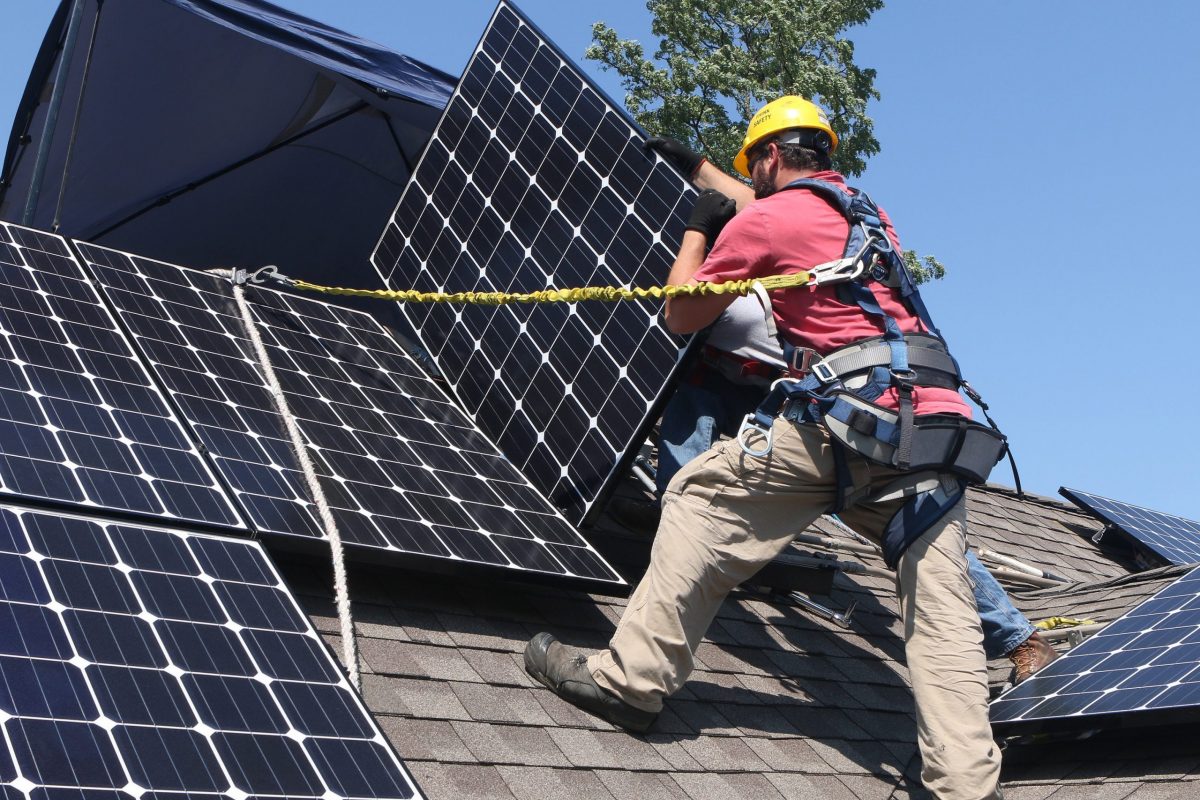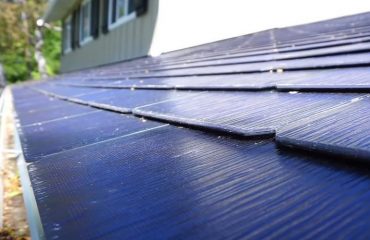Transform your environmental impact while securing your financial future through carbon offset renewable energy investments. The rapidly evolving landscape of clean energy technology now makes it possible for homeowners to significantly reduce their carbon footprint while generating substantial returns. By harnessing the environmental benefits of solar energy and other renewable sources, households can offset thousands of pounds of CO2 emissions annually while potentially eliminating their electricity bills entirely.
Modern carbon offset programs have revolutionized how we think about personal environmental responsibility. Rather than simply purchasing carbon credits, homeowners can now actively generate their own clean energy, creating a double impact through reduced grid reliance and increased renewable energy production. This direct approach to carbon offsetting not only delivers immediate environmental benefits but also provides tangible financial advantages through reduced utility costs, tax incentives, and potential income from excess energy production.
As global energy markets continue to shift toward sustainability, understanding how to effectively leverage renewable energy for carbon offsetting has become essential for environmentally conscious homeowners seeking to make a meaningful difference while securing their energy independence.
How Solar Energy Creates Real Carbon Offsets
The Carbon Footprint of Traditional Electricity
Traditional electricity generation, primarily from fossil fuels like coal and natural gas, contributes significantly to global carbon emissions. The average U.S. household generates approximately 5.5 metric tons of CO2 annually through electricity consumption alone. Power plants burning fossil fuels release greenhouse gases, sulfur dioxide, and other pollutants that harm our environment and contribute to climate change.
When you transform your home’s energy impact by switching to solar power, you’re dramatically reducing these emissions. For perspective, a typical coal-fired power plant produces about 2.2 pounds of carbon dioxide for every kilowatt-hour of electricity generated. Natural gas plants produce roughly half that amount, but still contribute significantly to atmospheric carbon levels.
By comparison, solar panels produce clean electricity with zero direct emissions during operation. The only carbon footprint comes from their manufacturing and installation, which is typically offset within the first two to three years of operation. This stark difference in environmental impact makes renewable energy solutions increasingly attractive for environmentally conscious homeowners looking to reduce their carbon footprint while maintaining their energy needs.
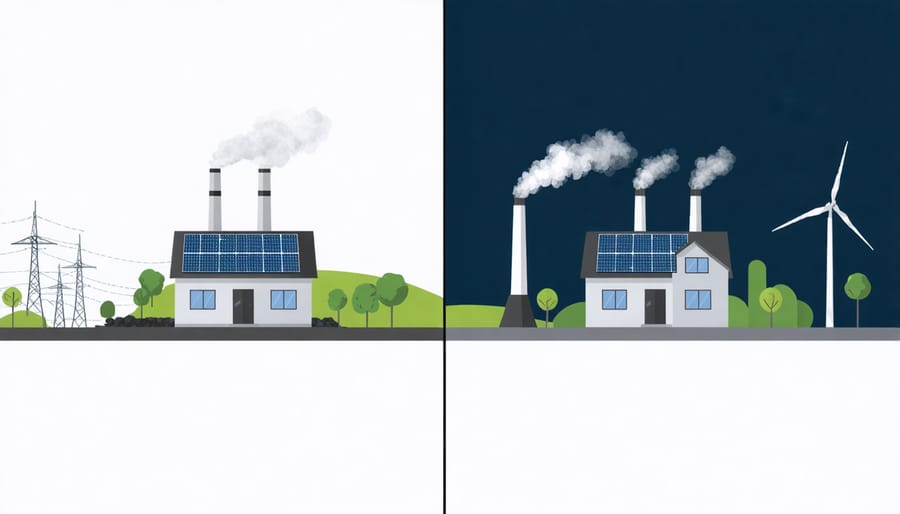
Your Solar System’s Offset Calculator
Calculating your solar system’s carbon offset is simpler than you might think. Start by determining your system’s annual power generation in kilowatt-hours (kWh) – this information is typically available from your solar monitoring system or installer. For every 1,000 kWh of solar energy produced, you offset approximately 0.7 metric tons of CO2 that would otherwise be generated from traditional power sources.
To get your total offset, multiply your annual kWh production by 0.0007. For example, a 6kW system producing 7,500 kWh annually would offset about 5.25 metric tons of CO2 per year. This is equivalent to taking one car off the road or planting 87 trees.
For a more precise calculation, consider your local power grid’s energy mix, as regions heavily dependent on coal will show higher offset numbers than areas already using more renewable energy. Many solar monitoring apps now include built-in carbon offset calculators, making it even easier to track your environmental impact in real-time.
Remember that these calculations are estimates, but they provide a reliable snapshot of your contribution to reducing greenhouse gas emissions.
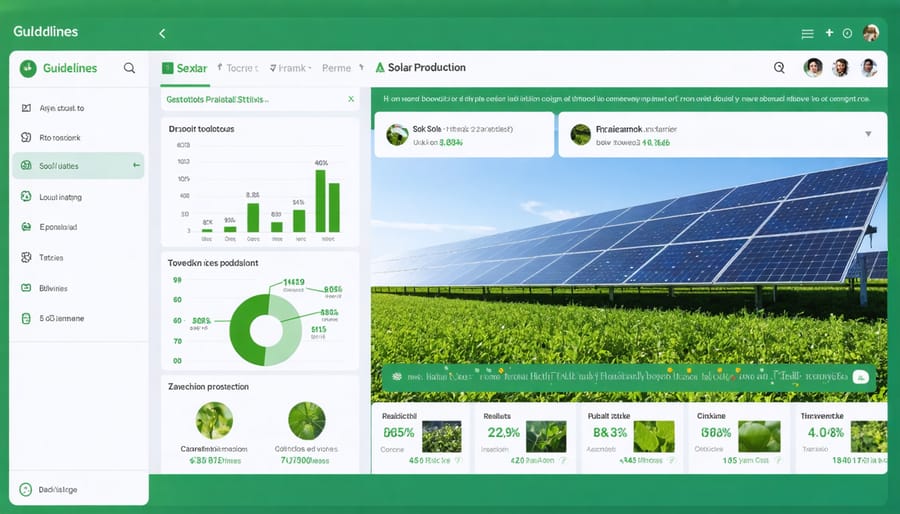
Financial Benefits of Solar Carbon Offsets
Carbon Credit Markets
Carbon credit markets offer homeowners with renewable energy systems an exciting opportunity to earn additional income while contributing to environmental protection. When you generate clean energy through solar panels or other renewable sources, you’re effectively reducing carbon emissions that would have otherwise come from traditional power sources.
Many homeowners are surprised to learn they can participate in carbon credit trading. Here’s how it works: for every metric ton of carbon emissions your renewable energy system prevents, you can earn one carbon credit. These credits can then be sold to businesses and organizations looking to offset their carbon footprint.
To get started, you’ll need to register your renewable energy system with a certified carbon credit program. These programs help calculate your system’s carbon offset, verify the reductions, and connect you with buyers in the marketplace. While individual homeowners typically generate modest amounts of credits, community solar programs and neighborhood initiatives can pool resources to achieve more significant trading potential.
The value of carbon credits varies based on market conditions, but prices have been trending upward as more companies commit to sustainability goals. Some homeowners report earning several hundred dollars annually through carbon credit sales, effectively adding to the financial benefits of their renewable energy investment.
Tax Incentives and Rebates
Making the switch to renewable energy is more affordable than ever, thanks to numerous tax incentives and rebates available at federal, state, and local levels. The federal government offers a substantial Solar Investment Tax Credit (ITC), which allows homeowners to deduct 30% of their solar system installation costs from their federal taxes through 2032.
Many states offer additional tax benefits and incentives. These can include property tax exemptions for the added home value from solar installations, sales tax exemptions on solar equipment purchases, and performance-based incentives that pay you for the clean energy your system produces.
Local utilities often provide rebates and grants to encourage renewable energy adoption. Some offer net metering programs, allowing you to earn credits for excess power your system generates and feeds back into the grid. These credits can significantly reduce your monthly electricity bills.
Businesses can also benefit from accelerated depreciation through the Modified Accelerated Cost Recovery System (MACRS), allowing them to recover their solar investment costs through tax deductions more quickly.
To maximize your savings, consider combining multiple incentives. While the initial investment in renewable energy may seem substantial, these financial incentives, combined with long-term energy savings and environmental benefits, make it an increasingly attractive option for homeowners and businesses alike.
Maximizing Your Solar System’s Offset Potential
System Size and Placement
The effectiveness of your carbon offset through renewable energy largely depends on proper system sizing and strategic placement. To maximize your environmental impact, start by conducting a thorough energy audit of your home to determine your actual power needs. This helps ensure your system isn’t over or undersized, which could affect both cost-effectiveness and carbon reduction potential.
For optimal solar panel efficiency optimization, south-facing roof sections typically offer the best exposure in the Northern Hemisphere. The ideal roof pitch ranges between 30-45 degrees, though panels can be installed successfully on various slopes using mounting solutions. Consider factors like shade from nearby trees or buildings, which can significantly impact energy production.
When calculating system size, a good rule of thumb is to allow about 100 square feet of roof space for every 1 kilowatt of solar capacity. The average American home typically requires a 6-8 kW system to offset their entire electricity usage, though this varies based on location and energy consumption patterns.
Don’t forget to account for future energy needs. If you’re planning to add an electric vehicle or expand your home, factor this into your initial system design. Many homeowners find it more cost-effective to slightly oversize their system initially rather than adding panels later.
Remember that proper placement isn’t just about maximizing energy production – it’s about optimizing your carbon offset potential. Even partial shade on one panel can affect the entire system’s performance, so careful positioning is crucial for achieving your environmental goals.

Maintenance and Monitoring
Regular maintenance and monitoring are essential to ensure your renewable energy system continues to effectively offset carbon emissions. Start by establishing a baseline for your system’s performance during the first few months of operation, recording daily or weekly energy production numbers. This data becomes your reference point for spotting any decline in efficiency.
For solar panel systems, schedule bi-annual cleaning to remove dust, leaves, and debris that can reduce energy generation. During these cleanings, inspect panels for any damage or wear. Consider installing a monitoring system that tracks real-time energy production and alerts you to potential issues before they impact your offset goals.
Keep detailed records of your system’s maintenance history and energy production. Many modern renewable energy systems come with smartphone apps or web portals that make tracking easier. These tools often provide insights into your carbon offset achievements and help identify patterns that might affect system performance.
For wind turbines, regular bearing lubrication and blade inspection are crucial. Check guy-wires and bolts quarterly to ensure everything remains secure. With biomass systems, maintain proper fuel storage conditions and clean combustion chambers according to manufacturer specifications.
Remember to verify your carbon offset calculations annually, adjusting for any changes in your local power grid’s energy mix or updates to carbon emission factors. This ensures your offset claims remain accurate and credible. Consider having a professional inspection every two to three years to validate system performance and identify any necessary upgrades or replacements that could improve efficiency.
Proper maintenance not only maximizes your environmental impact but also protects your investment and ensures continued financial returns through energy savings.
Future-Proofing Your Solar Investment
Emerging Technologies
The landscape of renewable energy is rapidly evolving, with emerging solar technologies pushing the boundaries of what’s possible in carbon offsetting. Recent breakthroughs in photovoltaic efficiency have resulted in panels that can convert up to 25% of sunlight into electricity, a significant improvement from the 15% efficiency common just a decade ago.
Perovskite solar cells are leading this revolution, offering the potential for higher efficiency at lower production costs. These next-generation cells can be manufactured using simple printing processes, potentially reducing both the carbon footprint of production and installation costs for homeowners.
Bifacial solar panels, which capture sunlight from both sides, are becoming increasingly popular in residential installations. These panels can increase energy generation by up to 30% compared to traditional panels, maximizing carbon offset potential in the same roof space.
Smart monitoring systems are also transforming how we track and optimize carbon offsets. Advanced AI-powered systems can now predict energy generation patterns, adjust for weather conditions, and provide real-time offset calculations, helping homeowners better understand their environmental impact.
Integration with home energy storage systems has improved dramatically, allowing excess solar power to be stored more efficiently. This advancement means more consistent carbon offsetting, even during cloudy days or nighttime hours, making solar energy an increasingly reliable alternative to fossil fuels.
Policy Trends
The landscape of carbon offset policies is evolving rapidly, with governments worldwide implementing more robust regulations to combat climate change. Recent trends show an increasing number of states offering enhanced incentives for homeowners who invest in renewable energy systems, particularly when combined with carbon offset programs.
Looking ahead, experts predict a shift towards standardized carbon offset verification processes, making it easier for homeowners to understand and participate in these programs. Many regions are introducing simplified registration systems for small-scale renewable energy projects, allowing residential solar installations to more easily qualify for carbon credits.
The voluntary carbon market is expected to grow significantly, with projections suggesting a tenfold increase by 2030. This growth means more opportunities for homeowners to monetize their renewable energy investments through carbon offset programs. Additionally, many utility companies are developing programs that allow customers to earn credits for their solar energy production and associated carbon reductions.
Policy makers are also focusing on increasing transparency in carbon offset markets, with new tracking systems and verification methods being developed. These improvements will help ensure that homeowners receive fair value for their contributions to reducing carbon emissions. Watch for upcoming changes in federal tax incentives and state-level programs that may make combining renewable energy with carbon offsets even more financially attractive for homeowners.
Carbon offset renewable energy represents a powerful solution for homeowners looking to make a meaningful impact on the environment while enjoying significant personal benefits. By investing in renewable energy systems, particularly solar panels, you’re not just reducing your carbon footprint – you’re taking an active role in building a more sustainable future.
The advantages are clear and compelling: lower electricity bills, increased property value, and the satisfaction of knowing your home is powered by clean energy. When combined with available tax incentives and rebates, the financial benefits make the transition to renewable energy increasingly attractive for homeowners.
Every kilowatt-hour of clean energy generated offsets approximately one pound of carbon dioxide that would otherwise be released into the atmosphere through traditional power generation. For the average household, this can mean preventing several tons of carbon emissions annually – equivalent to planting hundreds of trees.
The time to act is now. With advancing technology making renewable energy more efficient and affordable than ever before, there’s never been a better opportunity to make the switch. Whether you’re motivated by environmental concerns, financial savings, or energy independence, investing in carbon offset renewable energy is a decision that benefits both your household and the planet.
Take the first step today by exploring your renewable energy options and joining the growing community of homeowners who are leading the charge toward a cleaner, more sustainable future.


